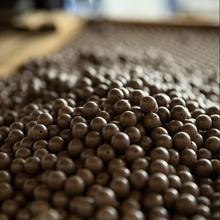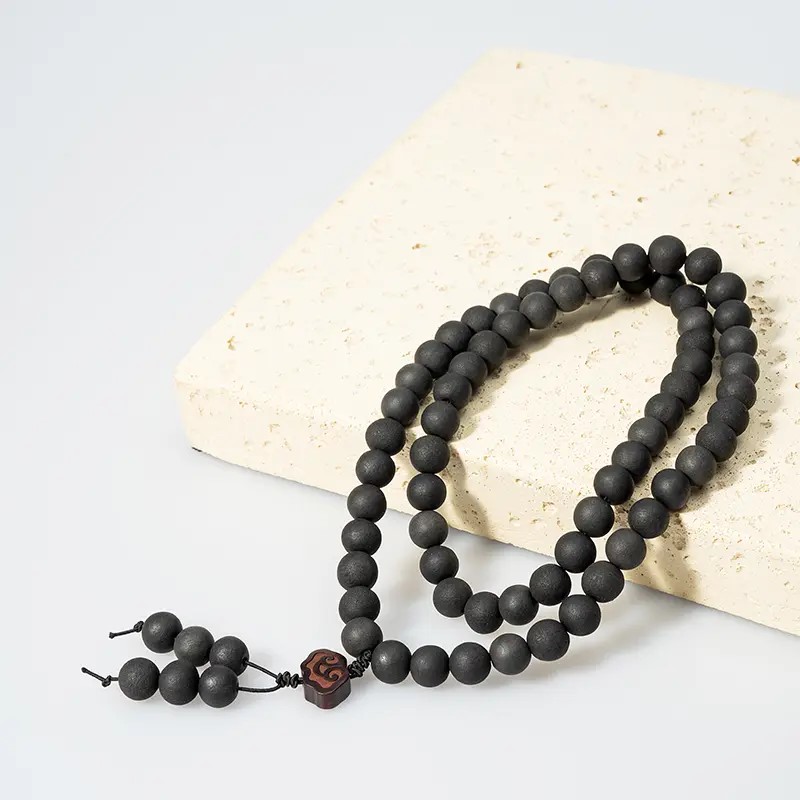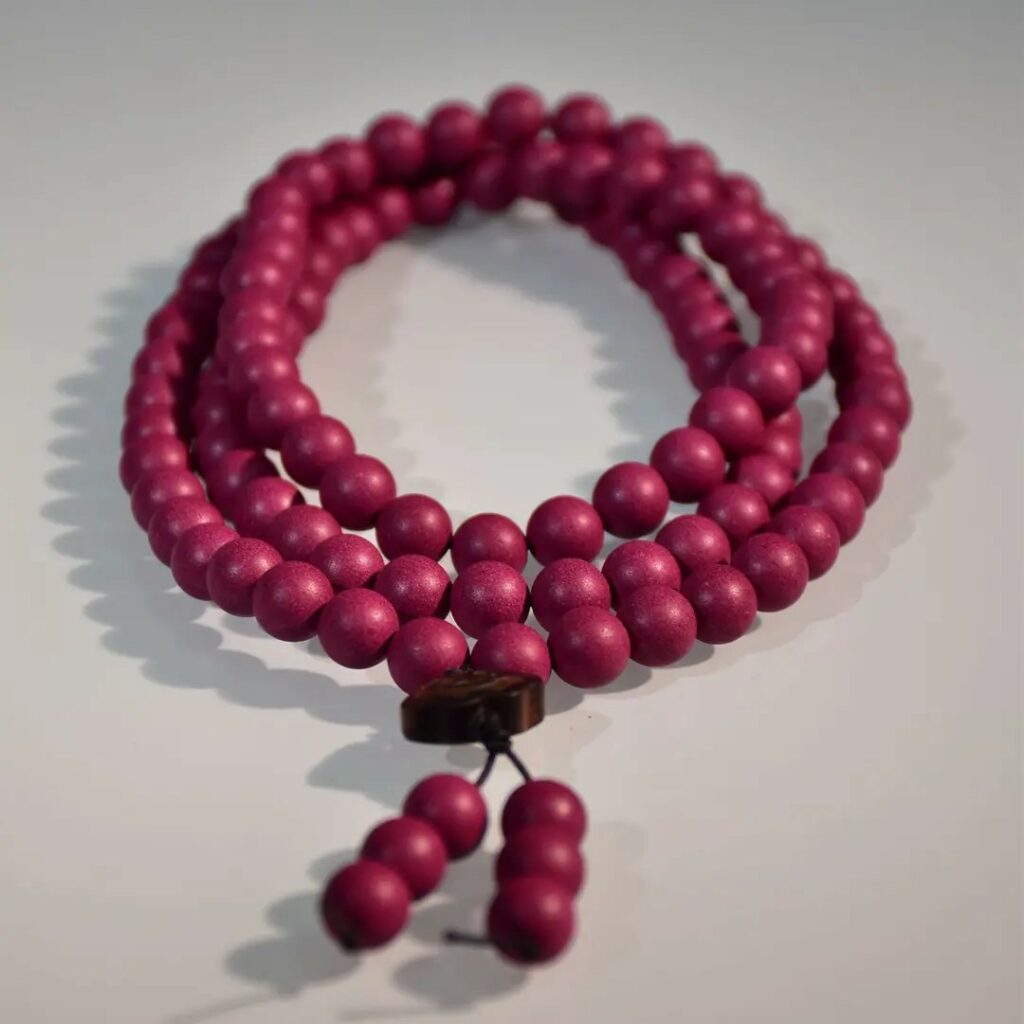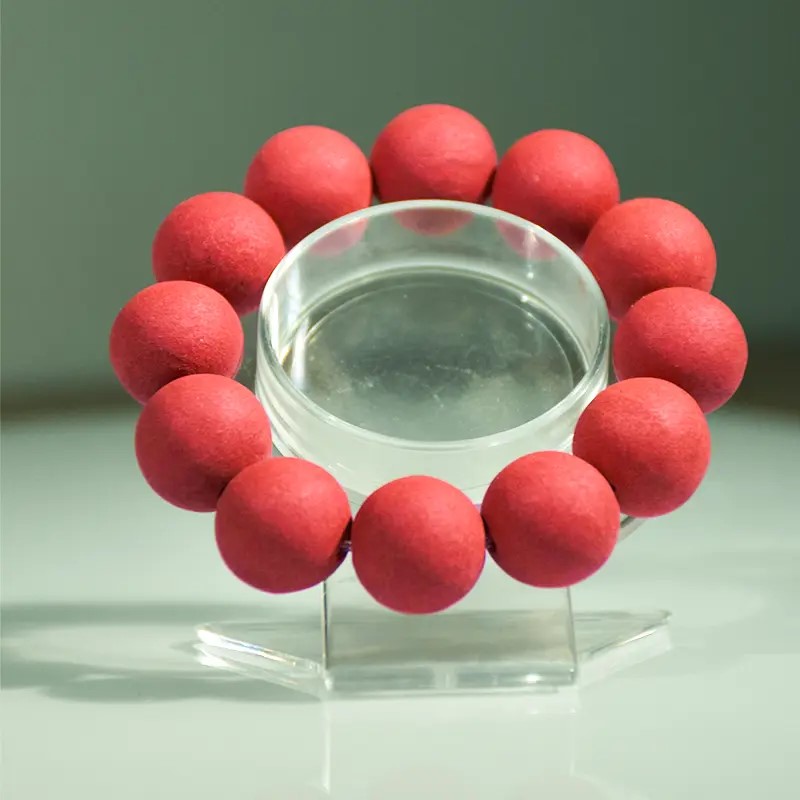The Elegance of Incense, Flowing with Song Dynasty Charm
Chinese incense culture boasts a long and rich history, with the Song Dynasty marking a pinnacle in its development. During this period, incense transcended its solemn role in rituals to become an integral part of the literati’s daily lives, a means of self-cultivation and refined pleasure. Song Dynasty scholars and gentlemen regarded burning incense, brewing tea, hanging paintings, and arranging flowers as the “Four Leisurely Pursuits,” with incense burning holding the foremost position, underscoring its significant role in the cultural life of the time.Song literati considered incense burning a daily affair, an indispensable companion whether reading, composing poetry, playing the zither, sipping tea, or meditating in solitude. As Lu You’s poem states, “When the fan inspires, I idly wield the brush; after rinsing with cold spring water, I burn incense alone”; Liu Kezhuang also wrote, “A single gram of agarwood dissipates the long day, a few pages of worm-eaten books accompany the lingering night,” vividly depicting how fragrance permeated the profound and serene daily lives of scholars.
Among the myriad incense artifacts and products of the Song Dynasty, there was a special existence: “He Xiang Zhu” (compounded incense beads). He Xiang Zhu were not meant for burning but were worn as “soft incense,” carried on the person, allowing the fragrance to follow one’s shadow and continuously permeate the heart and mind.2 They were not only exquisite ornaments but also a microcosm of the Song Dynasty literati’s philosophy of life and aesthetic taste, a perfect blend of natural incense materials and ancient wisdom.Today, we will explore this fragrance that has traversed millennia, especially the “Su Ne Han Yu Ya Xiang” He Xiang Zhu, which embodies Su Shi’s unique spirit, and experience the charm of its ancient revival.
Exploring Su Shi’s “Su Ne Han Yu Ya Xiang”: Unrestrained Spirit and Incense Innovation
Su Shi: Why Was His “Su Ne Han Yu Ya Xiang” Not Poor?
When mentioning Su Shi, people first think of his bold and unconstrained poetry and his open-minded philosophy of life. However, this great Northern Song Dynasty literary figure also held unique insights and innovations in the realm of incense. He personally blended an incense called “Su Ne Han Yu Ya Xiang.” At first glance, this name seems to carry a hint of poverty and self-mockery. However, historical records show that Su Shi was not truly unable to afford expensive agarwood. On the contrary, he was perfectly capable of consuming precious incense materials such as agarwood, sandalwood, borneol, and musk.
The name “Su Ne Han Yu Ya Xiang” primarily reflects Su Shi’s unconventional personality and his “transformation” and challenge to traditional incense practices. At that time, “office incense” (ya xiang), used for official settings, typically emphasized neutrality and harmony. In the cultural memory of the people, it was generally believed that “office incense” must contain agarwood as the “sovereign incense” (jun xiang), due to its stable and grand qualities, which allowed it to blend seamlessly with any other incense material.7 However, Su Shi boldly broke this tradition, drawing inspiration from Buddhist incense’s concept of “sandalwood and frankincense harmony” and applying it to the creation of office incense. Su Shi’s immense cultural influence gradually led incense enthusiasts of his time and later generations to accept the notion that office incense could exist without agarwood.7 This was not only Su Shi’s personal olfactory aesthetic choice but also reflected changes in the Song Dynasty’s incense consumption structure, particularly the gradual replacement of agarwood by frankincense as the main imported incense material due to trade development.
Traditional Chinese Compound Incense
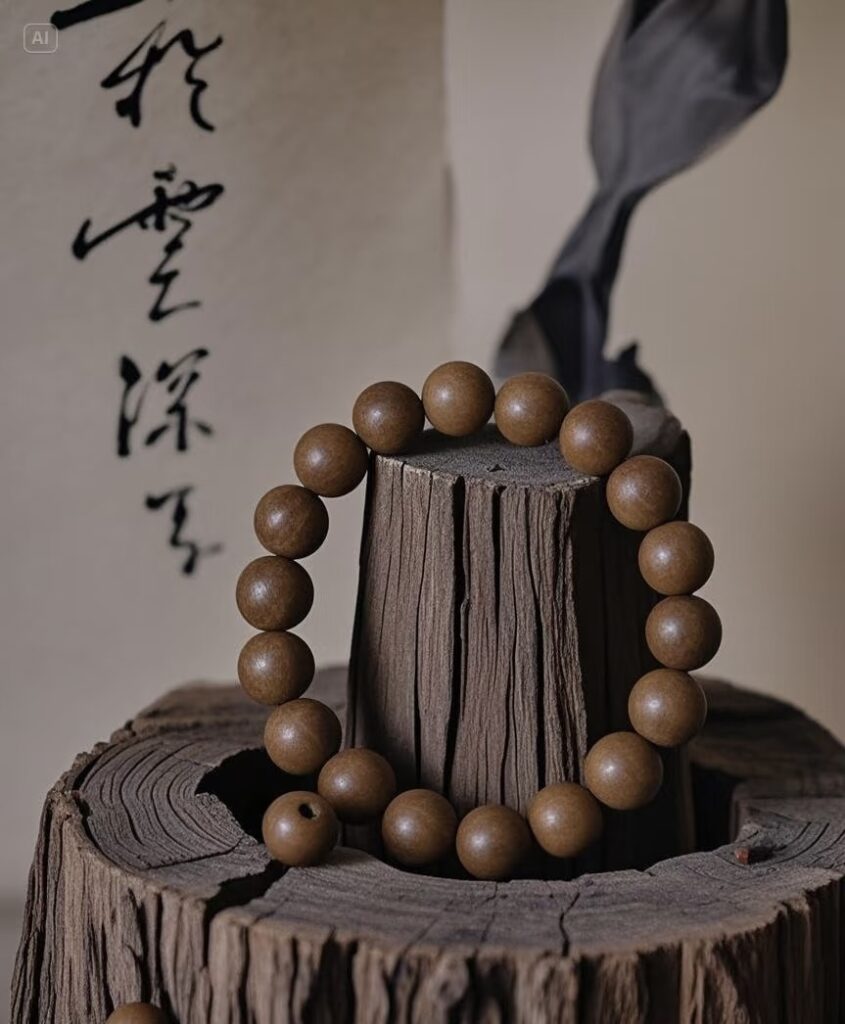
Traditional Chinese Compound Incense
The Delicate Art of Chinese aroma incense
Incense beads, or Chinese aroma incense beads , are far more than simple ornaments. These meticulously crafted spheres, born from the fusion of powdered precious woods, resins, herbs, and binding agents, represent a unique intersection of ancient Chinese fragrance culture, artistry, and contemplative practice. beads
The Unique Formula of “Su Ne Han Yu Ya Xiang”: The Mystery of White Sandalwood, Frankincense, Musk, and Radix Scrophulariae
Su Shi’s “Su Ne Han Yu Ya Xiang” formula, as recorded in Chen Jing’s “Chen Shi Xiang Pu” (Chen’s Incense Manual), consists of the following four ingredients: four liang of white sandalwood, five grains of frankincense, one zi of musk, and one qian of Radix Scrophulariae. This is the only “office incense” formula among numerous incense manuals that does not use agarwood as the sovereign incense.6
| Incense Material Name | Quantity | Scent Characteristics | Cultural/Medicinal Significance |
| White Sandalwood | Four liang | Sensual and noble woody scent, rich and long-lasting, with a warm feel. | Commonly used in Buddhist incense, often harmonized with frankincense, symbolizing tranquility and elegance.7 |
| Frankincense | Five grains | Full and sensual, with the warmth and depth of resin, slightly sweet. | Commonly used in Buddhist incense, often paired with sandalwood, believed to have calming and blood-activating effects.7 |
| Musk | One zi | Extremely penetrating and diffusive, with a rich aroma that enhances the complexity and longevity of the scent. | Traditionally used in compounded incense for diffusing and fixing the scent, enhancing the overall fragrance.2 |
| Radix Scrophulariae | One qian | May bring a “medicinal” note, a blend of slight sweetness and bitterness, to the fragrance. | A traditional Chinese medicinal herb; Song people sometimes added Xuan Shen (Radix Scrophulariae) to incense, pursuing an olfactory aesthetic “not favored by the world,” reflecting the literati’s aloof and independent group personality. |
Ancient Incense Craftsmanship: From Grinding to “Buried for a Month” Ingenuity
The production process of Su Shi’s “Su Ne Han Yu Ya Xiang” strictly followed ancient methods, imbued with the ingenuity and wisdom of the Song people. First, white sandalwood needed to be pounded into coarse powder, then musk was finely ground and added to the sandalwood. Next, one liang of fine charcoal powder was added; this charcoal not only lent color to the incense but was also ground finely with the frankincense to ensure all ingredients were thoroughly and evenly blended.
After all ingredients were uniformly mixed, refined honey was used as a binder to form them into incense cakes or pills. Finally, the prepared incense mixture was firmly pressed and sealed in a ceramic vessel, then buried underground for a full month. This “buried for a month” step was particularly crucial, not arbitrary, but a testament to the ancients’ profound understanding of incense materials. Under constant temperature and humidity, the incense materials could fully mature, making the fragrance richer, more stable, and more layered. This process was the essence of ancient compounded incense, ensuring the quality and lasting effect of the incense product.
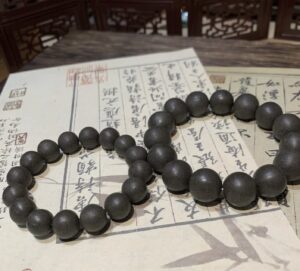
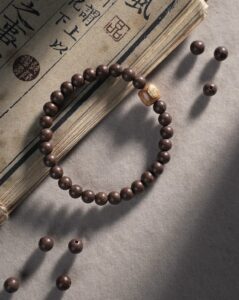
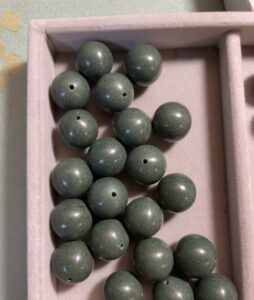
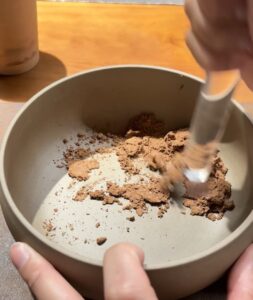
Su Shi’s Scent Preferences and “Not Favored by the World”
The uniqueness of Su Shi’s “Su Ne Han Yu Ya Xiang” lies not only in its departure from traditional agarwood in its formula but also in how it reflects a profound transformation in the olfactory aesthetics of Song Dynasty literati. The Song people’s pursuit of incense was no longer merely about pure fragrance but focused more on creating an “artistic conception” .This aesthetic inclination was a product of the dramatic changes in the Song Dynasty’s socio-economic foundation and the transformation of the literati’s spiritual outlook.With the flourishing maritime trade, foreign incense materials poured in, and the Song people’s depth and breadth of knowledge about incense far surpassed previous eras. In this context, literati began to deliberately create scents different from those of previous generations, pursuing an olfactory aesthetic “not favored by the world”.
This pursuit of “not favored by the world” reflected the aloof and independent group personality of Song Dynasty scholar-officials. They sometimes added ingredients like Radix Scrophulariae, Ligusticum striatum, or Moutan Cortex to their incense, giving it a “medicinal” feel, a blend of sweetness and bitterness; sometimes they even used Nardostachys grandiflora, which brought a sour, “fermented bean” scent, to imbue the fragrance with richer connotations. These scents, which might seem “unpleasant” to ordinary people, were precisely a projection of the Song literati’s spiritual world. They deliberately avoided immersing themselves in purely beautiful aromas to demonstrate their “concern for the world before others, and enjoyment after others” philosophy.Therefore, Su Shi’s “Su Ne Han Yu Ya Xiang” was not due to poverty leading him to abandon agarwood, but rather his unconventional personality, applying the “sandalwood and frankincense harmony” concept from Buddhist incense to office incense, thereby transforming the incense tradition. His immense cultural influence led to the widespread acceptance that “office incense could exist without agarwood”.7 This was not only a breakthrough in the traditional incense system but also an innovative “return to antiquity” by Song literati in incense culture, integrating new aesthetic concepts and the spirit of the times while inheriting ancient herbal incense materials.8
The Natural Beauty and Ancient Heritage of He Xiang Zhu
What is He Xiang Zhu? The Essence of Traditional Incense and Wearing Culture
He Xiang Zhu, as the name suggests, are small beads made by compounding various natural incense materials and traditional Chinese medicinal herbs according to specific formulas and ancient techniques. They not only serve as beautiful ornaments but are also incense products with medicinal value. In the Song Dynasty, He Xiang Zhu were “soft incense” worn daily by literati and gentlemen. They could be placed in hollow sachets and worn on the chest or waist, allowing the fragrance to accompany the wearer and nourish the mind and body.This method of wearing meant that the fragrance was no longer limited to the brief diffusion during burning but became a continuous, private personal experience.
The Gift of Natural Incense Materials: Essential Differences from Modern Synthetic Fragrances
The He Xiang Zhu we advocate today adhere to this natural, ancient philosophy. This is fundamentally different from modern industrially produced synthetic fragrances.
| Feature | Traditional Natural Incense Materials | Modern Synthetic Fragrances |
| Source | Derived from natural plants (e.g., sandalwood, Radix Scrophulariae) or animal extracts (e.g., musk), and traditional Chinese medicinal herbs.11 | Prepared through chemical synthesis, simulating natural aromas or creating new ones.14 |
| Scent Characteristics | Naturally fragrant, fresh, long-lasting, rich, and elegant, often with a medicinal or unique plant-specific aroma.8 | High consistency in scent, can be mass-produced, but may lack the complex layers and vitality of natural fragrances.14 |
| Safety | Generally high safety when used appropriately; many possess health-preserving benefits of traditional Chinese medicine, such as invigorating qi and blood, and antioxidant properties. | Production may involve harmful chemicals (e.g., formaldehyde, dichloromethane); long-term exposure may affect skin, respiratory tract, or overall health; some may cause allergies or be contraindicated for special populations (e.g., pregnant women).16 Even traditional incense products, if improperly made, may pose risks from heavy metals, formaldehyde, volatile organic compounds (VOCs), and polycyclic aromatic hydrocarbons (PAHs). |
| Production Consistency | Affected by natural conditions, slight variations in scent may occur between batches; values “natural perfection.” | Easy to standardize and mass-produce, high product consistency. |
| Cultural Value | Carries profound historical and cultural heritage, closely linked to traditional lifestyles, philosophical thought, and aesthetic tastes. | Primarily satisfies olfactory needs, with relatively lower cultural added value. |
Traditional He Xiang Zhu use pure natural incense materials such as white sandalwood, frankincense, musk, and Radix Scrophulariae. Their fragrances are naturally aromatic, fresh, long-lasting, and elegantly rich.These natural incense materials often embody the wisdom of traditional Chinese medicine, possessing unique health-preserving benefits. For instance, He Xiang Zhu are not only pleasantly fragrant but are also believed to invigorate qi and blood, nourish the heart and spleen, strengthen the kidneys and calm the spirit, relieve stagnation and dispel phlegm, and also clear orifices, clear heat and detoxify, dispel dampness, and drain pus. Natural spices are rich in various active compounds such as phenolic acids, flavonoids, and terpenes, which possess strong antioxidant activity beneficial to human health.15 When used appropriately, natural incense materials offer higher safety and are more in harmony with the human body and nature.
In contrast, while modern synthetic fragrances offer advantages in cost and scent consistency, their production often involves complex chemical synthesis and may contain harmful chemical substances like formaldehyde, dichloromethane, or be endocrine disruptors. Long-term exposure to these substances may affect the skin, respiratory tract, and even overall health.17 Some synthetic fragrances may even cause allergic reactions or have adverse effects on special populations (e.g., pregnant women); for example, synthetic musk may have blood-activating and uterine-stimulating effects, requiring caution for pregnant women.16 Furthermore, even traditional incense products, if improperly made, may pose risks from heavy metals, formaldehyde, volatile organic compounds (VOCs), and polycyclic aromatic hydrocarbons (PAHs). Therefore, choosing legitimate, quality-assured natural compounded incense products is crucial.
Adhering to Ancient Methods: Reverence and Guardianship of Traditional Craftsmanship
Adhering to ancient methods in making He Xiang Zhu is not merely a faithful reproduction of Song Dynasty incense culture and Su Shi’s “Su Ne Han Yu Ya Xiang” formula. It is a deep belief in the inherent healing power of natural incense materials, and a reverence for and guardianship of traditional craftsmanship and the essence of Chinese culture. Every step of ancient compounded incense making, from the careful selection and preparation of materials, to grinding, mixing, forming with refined honey, and even the unique “buried for a month” maturation process in Su Shi’s “Su Ne Han Yu Ya Xiang” , embodies the ancients’ profound insight into natural laws and their masterful understanding of incense properties.
These seemingly cumbersome steps are actually crucial for ensuring that natural incense materials fully integrate, that the fragrance remains stable and long-lasting, and that their health-preserving effects are maximized. For example, the “buried for a month” step utilizes the constant temperature and humidity underground to promote slow and thorough chemical reactions among the active components of the incense materials, thereby making the fragrance richer, more harmonious, and extending its longevity. This extreme pursuit of craftsmanship details reflects the ancients’ practice of the “unity of heaven and humanity” philosophy; they believed that only by conforming to nature and meticulously crafting could supreme products be achieved.
Therefore, adhering to ancient methods in making He Xiang Zhu is not simply replicating history but inheriting a philosophy of life and a spirit of craftsmanship. It ensures that the incense product not only brings olfactory enjoyment but also positively impacts the body and mind, connecting ancient wisdom with modern life, allowing the “incense flame” to continue, and enabling excellent traditional Chinese culture to flourish anew in the present.
Modern Applications and Cultural Value of He Xiang Zhu
Daily Wearing and Maintenance of He Xiang Zhu
In the Song Dynasty, He Xiang Zhu were personal items of literati and gentlemen. Today, we can still integrate them into modern life, experiencing that elegance and tranquility. Wearers can adorn He Xiang Zhu on their wrists, necks, or place them in hollow sachets to hang from their waists, allowing the fragrance to accompany their daily lives, constantly experiencing that elegance and tranquility.
However, wearing He Xiang Zhu transforms traditional incense practices from static burning rituals into dynamic personal companionship. This requires us not only to appreciate their fragrance but also to understand and practice their unique maintenance methods to preserve their natural aroma and health-preserving efficacy. Since He Xiang Zhu are made from natural incense materials, their fragrance will volatilize with changes in time, temperature, and humidity. Therefore, daily maintenance is crucial. Wearers must store them in a cool, dry place, away from direct sunlight and humid environments, to prevent rapid fragrance dissipation or mildew. For example, Su Shi’s “Su Ne Han Yu Ya Xiang” needed to be “buried for a month” for maturation after production, which precisely reflects the ancients’ profound understanding of how natural incense materials stabilize and mature in specific environments.Similarly, daily worn He Xiang Zhu also require proper storage to maintain the stability of their fragrance and the longevity of their effects. This emphasis on maintenance is a respect for the fragile and precious nature of natural incense materials, and a continuation of ancient wisdom.
Infusing Life with Fragrance: Cultivating Mind and Body, Appreciating Elegance
The fragrance of He Xiang Zhu can help wearers refresh their minds, purify their thoughts, calm their spirits, aid concentration, and stimulate literary inspiration. In the fast-paced modern life, wearing He Xiang Zhu can provide people with an ever-present “fragrant realm,” a sense of inner peace and composure. It is not merely an olfactory pleasure but also spiritual nourishment, allowing people to savor the elegant life of the Song people, where “small pavilions and secluded windows, everywhere is fragrant”.2 The tranquility brought by this fragrance is precisely the “profound and serene realm” pursued by Song literati, an important part of their self-cultivation.
Passing on the Incense Flame: He Xiang Zhu as a Carrier of Cultural Memory and Spiritual Sustenance
He Xiang Zhu embody the Song Dynasty literati’s understanding and innovation in incense practices, especially the unrestrained spirit and transformation of traditional incense represented by Su Shi’s “Su Ne Han Yu Ya Xiang”. They remind future generations that tradition is not static but continuously innovates and develops through inheritance. Wearing He Xiang Zhu is not just wearing a fragrance; it is wearing a piece of historical memory, a tribute to ancient wisdom, and an affirmation and continuation of excellent traditional Chinese culture. It allows the “incense flame” to continue, enabling ancient wisdom to flourish anew in the present, becoming a bridge connecting the past and present, matter and spirit.
From Su Shi’s “Su Ne Han Yu Ya Xiang” to today’s He Xiang Zhu, this fragrance that has traversed millennia is not merely the aroma of incense materials but also an embodiment of the Chinese cultural philosophies of “unity of heaven and humanity” and “self-cultivation.” It reveals that true elegance is not about luxurious accumulation but about respect for nature, adherence to ancient methods, and nourishment of the inner world. He Xiang Zhu are precisely such precious carriers, integrating history, culture, art, and health preservation.
Through an in-depth exploration of “Su Neihan’s Su Ne Han Yu Ya Xiang,” we have seen how Song Dynasty literati used incense as a medium to express their unique aesthetic tastes and independent personalities. Their exquisite use of incense materials, strict adherence to incense-making processes, and profound pursuit of the fragrance’s artistic conception collectively built the splendor of Song Dynasty incense culture. He Xiang Zhu, as the concretization of this cultural heritage, with their natural fragrance and ancient lineage, offer modern people a path to inner peace and traditional wisdom. They invite us to slow down, savor the fragrance in life, and feel the profound charm of traditional Chinese culture.

